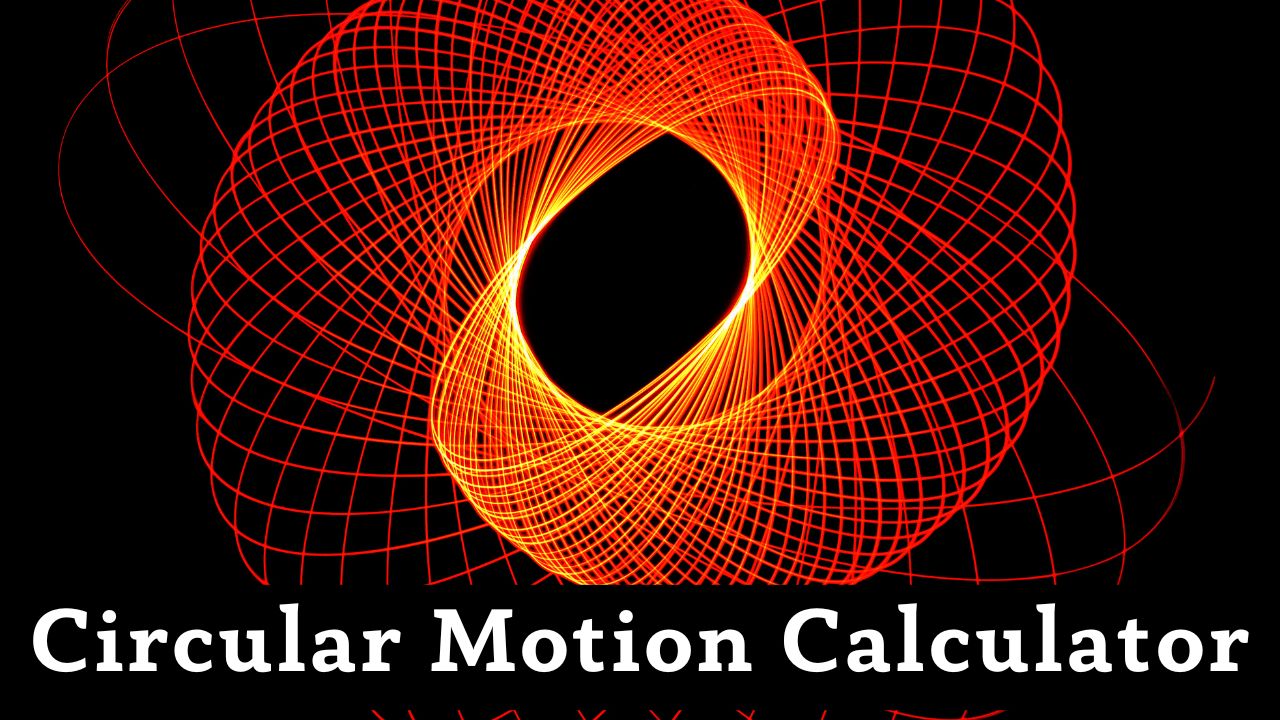
What is Circular Motion
Circular motion is one of the most fascinating and ubiquitous phenomena in physics, governing everything from the rotation of planets around the sun to the spin cycle in your washing machine. When an object moves along a circular path at constant speed, it experiences uniform circular motion – a type of motion that perfectly demonstrates the relationship between force, acceleration, and curved trajectories.
Key characteristics of Circular Motion:
- Constant speed, changing velocity: Speed remains constant, but direction continuously changes
- Centripetal acceleration: Always directed toward the center of the circle
- Centripetal force: The net inward force required to maintain circular motion
- Angular quantities: Angular velocity, period, and frequency describe rotational aspects
- Radius dependence: All motion parameters depend on the radius of the circular path
The Physics Behind Circular Motion: Why Objects Need Inward Force
The most profound insight about circular motion is that an object moving in a circle is constantly accelerating, even when its speed remains constant. This seems counterintuitive until you realize that velocity is a vector quantity – it has both magnitude (speed) and direction. Since the direction is continuously changing in circular motion, the velocity vector is constantly changing, which means acceleration must be present.
Centripetal Acceleration: a_c = v²/r = ω²r
- Direction: Always points toward the center of the circle
- Magnitude: Depends on speed squared and inversely on radius
- Physical meaning: Rate of change of velocity direction
- Alternative form: Using angular velocity ω = v/r
- Units: m/s² (same as linear acceleration)
This centripetal acceleration requires a centripetal force, given by Newton’s Second Law: F = ma_c = mv²/r = mω²r. This force doesn’t speed up or slow down the object – it only changes the direction of motion, keeping the object on its circular path.
Angular vs Linear Quantities
Circular motion can be described using either linear quantities (like linear velocity and distance) or angular quantities (like angular velocity and angle). Understanding the relationship between these two sets of quantities is crucial for mastering rotational physics.
Linear-Angular Relationships:
- Linear velocity: v = ωr (tangential speed around the circle)
- Angular velocity: ω = v/r = 2π/T = 2πf (rotation rate in rad/s)
- Arc length: s = rθ (distance traveled along circular path)
- Period: T = 2πr/v = 2π/ω (time for one complete revolution)
- Frequency: f = 1/T = ω/2π (revolutions per second)
Angular quantities are often more convenient because they’re independent of radius. For example, all points on a spinning disk have the same angular velocity, but points farther from the center have higher linear velocities.
Sources of Centripetal Force
Centripetal force isn’t a new type of force – it’s simply the name for whatever net force points toward the center of a circular path. Different situations provide centripetal force through different mechanisms, each with its own physics principles.
Common Sources of Centripetal Force:
- Tension: String or rope pulling a ball in circular motion
- Friction: Tires gripping the road as a car turns
- Gravity: Earth’s gravity keeping the Moon in orbit
- Normal force: Track pushing on a roller coaster car in a loop
- Magnetic force: Charged particles spiraling in magnetic fields
- Electric force: Electrons orbiting atomic nuclei (classical model)
Period and Frequency: Measuring Rotational Motion
Period (T) and frequency (f) are fundamental concepts that describe how quickly an object completes its circular motion. These quantities are inversely related and provide different perspectives on the same rotational behavior.
Period and Frequency Relationships:
- Period T: Time for one complete revolution (seconds)
- Frequency f: Number of revolutions per second (Hz)
- Inverse relationship: f = 1/T and T = 1/f
- Angular frequency: ω = 2πf = 2π/T (rad/s)
- Physical significance: Describes how “fast” the rotation occurs
